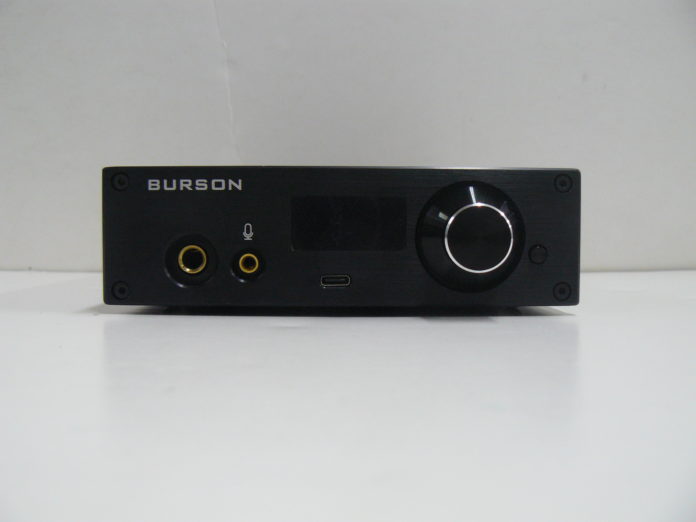Everyone needs a good headphone amplifier, and there’s a lot of thought that goes into deciding to purchase one. You’d arguably want one to be versatile, and maybe even permanent considering how expensive some amps can be. The Burson Playmate has me mixed on whether or not this would make an argument as your go-to amplifier, but it has a lot of features that keep things fresh. As just an amplifier it has some flaws that I’ll make sure to elaborate on, but I did find a lot to like about this specific amplifier.
The Burson Playmate is a Class A headphone amp that also acts as a DAC, and a pre-amp. It’s compatible with Windows, Mac OS, as well as mobile IOS, and android. Before I extrapolate on the Playmate any further, I should note that there are a few different versions of this model. I will be reviewing the basic variant of this design available for $399.
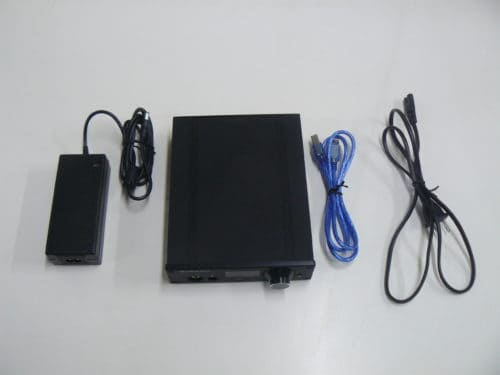
What You Get
You’ll find that the Playmate plays it pretty straight with its materials. Opening the box will reveal the amp itself, 25x35x15cm in dimension, and weighing about 3kg. I’m currently testing the black version, but the Playmate also comes in silver if that’s more your style. In using the basic variant of the Playmate I did not have a chance to test the remote that comes with other versions, so don’t expect one if you buy the basic. In the two side boxes, you’ll find the detachable power plug, USB, and RCA cables.
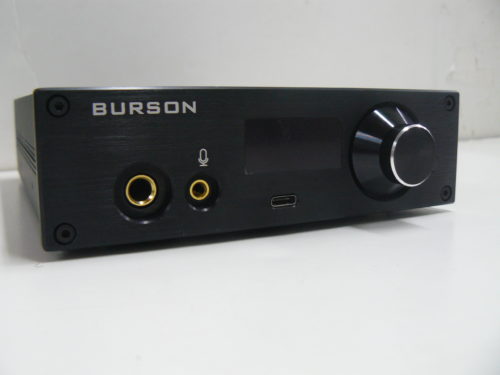
Build
Burson designs these classic, big brick amplifiers, and the Playmate is no different in that respect. It’s built with an anodized aluminum chassis that makes for a quality frame. You don’t exactly need to sacrifice much space for the amp, and it’ll be sure to fit nicely on a desk or stand. On the face of the device are your volume knob, screen, micro-c, mic, and quarter-inch headphone inputs. IOS devices will require a C to lighting adapter. The volume dial is sleek and responsive, and the front screen, while not being the most modern-looking interface, is simple, and readable. The rear of the device gives you two RCA inputs for DAC, and pre-amp use. You’ll also see your power switch, 4 pin power connector for PC mounting, and USB connector.
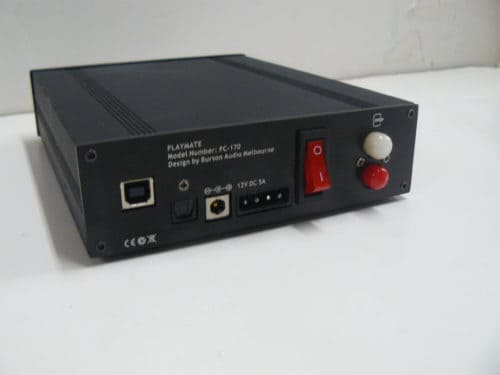
Functionality
There is a screen on the device as I mentioned, and it provides us with a few notable features. When pressing the button on the right side of the volume dial, you get access to 8 different features through a simple menu system. Use the dial to scroll through the different options, and press it in to select one. The first menu item lets you choose your input, where you can toggle through USB-B (back), USB-F (front), and OPT. Below that you can select your output setting where you can switch between headphones and pre-out.
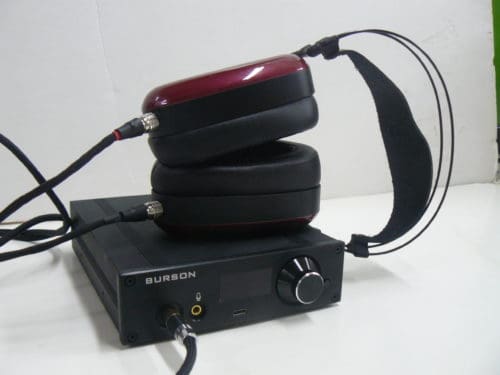
Soundstage
I’ve tested the Playmate with a large selection of headphones, from Dan Clark to Beyerdynamic, and I’ll be basing my feelings off of the similarities I’ve picked up on in my listening sessions. I felt that spatial imaging was accurately portrayed in the Playmate and layering was adequately structured in most mixes. This amp isn’t exactly going to put any extra color on tonality, it’s more for exercising detail and precision in instrumentation and vocal performance. There is a menu option called “emphasis” that’ll smooth out some of the sharper artifacts in the headphones timbre. However, tracks become less impactful with this setting turned on and some fidelity is lost. You can even add a brick-wall filter on the menu if the normal settings aren’t sharp enough for you.
Low End
The lows try to respond dynamically within the sound field, yet it struggles with some headphones and tracks that are mixed with a boosted focus. There’s a lot of gain in the lows that are compensated by a steady helping of sub-bass width that makes my synthwave tracks an engaging listen. There’s some body to the lower mids that drive rock tracks with growling distortion a trip. Hip-hop tracks feature some significant rumble but don’t expect any depth, or smoothness. The gain in the lows seems to try and compensate for its general flatness, which makes for a flawed timbre that may be hard to please some.
Mids
One of the biggest positives about the Playmate is its mid-range vocal response, that brings sharp clarity and analysis to performance. The right vocal can really bite and don’t need to cut through any harshness in other ranges. You get pristine neutrality that pops the mids into the sound field with little effort. Instrumentations have fullness and each pluck of a string or press on a piano key expresses its full detail. The palm muting strums on Paul Simon’s “Me and Julio Down By the Schoolyard” show this off in an articulate fashion.
Highs
A major flaw in the Playmate is the distribution of gain, and I feel that the highs could have used more of it. The extension of the mids was so expressive, that I wanted the highs to be handled with the same amount of fidelity. Sadly there just isn’t enough spark to them. It has its moments where brightness can take over a mix, and there is some delicious sibilance in some vocal tracks, but other elements like cymbal crashes just don’t feel like they resonate as they should. The highs aren’t terrible though, they just seem a tad shallow.
Summary
The Burson Playmate isn’t a bad amplifier in any regard. There are a few flaws to ponder, but it’s an affordable amp that’ll do the job quite well.
Pros and Cons
Pros: Responsive controls, sleek design, rich mid-range
Cons: Lacking highs, weak pre-amp signal
For more on the Burson Playmate visit their website here
MAJORHIFI may get a commission from retail offers.
MAJORHIFI may receive commissions from retail offers.


